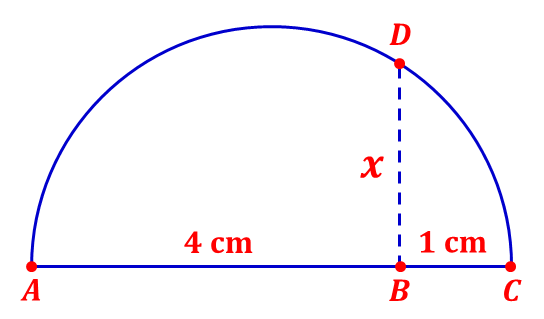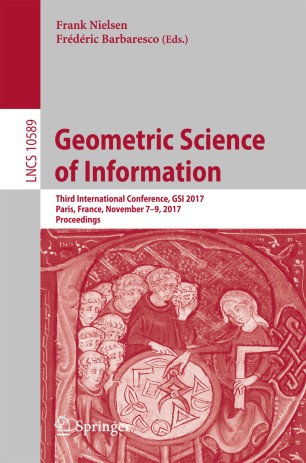
Geometry And Discrete Mathematics 126
The core algebra skills needed to understand the concepts, formulas, and graphs used in transfer-level statistics are investigated. Integrates numeracy, proportional reasoning, algebraic reasoning, and functions. Develops conceptual and procedural tools that support the use of key mathematical concepts in a variety of contexts.
Like this are among the objects studied by discrete mathematics, for their interesting, their usefulness as models of real-world problems, and their importance in developing computer.Discrete mathematics is the study of that are fundamentally rather than. In contrast to that have the property of varying 'smoothly', the objects studied in discrete mathematics – such as, and in – do not vary smoothly in this way, but have distinct, separated values. Discrete mathematics therefore excludes topics in 'continuous mathematics' such as. Discrete objects can often be by integers. More formally, discrete mathematics has been characterized as the branch of mathematics dealing with (finite sets or sets with the same as the natural numbers). However, there is no exact definition of the term 'discrete mathematics.' Indeed, discrete mathematics is described less by what is included than by what is excluded: continuously varying quantities and related notions.The set of objects studied in discrete mathematics can be finite or infinite.
The term finite mathematics is sometimes applied to parts of the field of discrete mathematics that deals with finite sets, particularly those areas relevant to business.Research in discrete mathematics increased in the latter half of the twentieth century partly due to the development of which operate in discrete steps and store data in discrete bits. Concepts and notations from discrete mathematics are useful in studying and describing objects and problems in branches of, such as,. Conversely, computer implementations are significant in applying ideas from discrete mathematics to real-world problems, such as in.Although the main objects of study in discrete mathematics are discrete objects, analytic methods from continuous mathematics are often employed as well.In university curricula, 'Discrete Mathematics' appeared in the 1980s, initially as a computer science support course; its contents were somewhat haphazard at the time. The curriculum has thereafter developed in conjunction with efforts by and into a course that is basically intended to develop in first-year students; therefore it is nowadays a prerequisite for mathematics majors in some universities as well. Some high-school-level discrete mathematics textbooks have appeared as well. At this level, discrete mathematics is sometimes seen as a preparatory course, not unlike in this respect.The is awarded for outstanding papers in discrete mathematics.
Much research in was motivated by attempts to prove that all maps, like this one, can be using so that no areas of the same color share an edge. And proved this in 1976.The history of discrete mathematics has involved a number of challenging problems which have focused attention within areas of the field. In graph theory, much research was motivated by attempts to prove the, first stated in 1852, but not proved until 1976 (by Kenneth Appel and Wolfgang Haken, using substantial computer assistance).In, the on 's list of open presented in 1900 was to prove that the of are., proved in 1931, showed that this was not possible – at least not within arithmetic itself. Was to determine whether a given polynomial with integer coefficients has an integer solution. Pixies doolittle rar zip free.
In 1970, proved that this.The need to German codes in led to advances in and, with the being developed at England's with the guidance of and his seminal work, On Computable Numbers. At the same time, military requirements motivated advances in. The meant that cryptography remained important, with fundamental advances such as being developed in the following decades.
Operations research remained important as a tool in business and project management, with the being developed in the 1950s. The industry has also motivated advances in discrete mathematics, particularly in graph theory. Of statements in logic has been necessary for of, and advances in have been driven by this need.has been an important part of the incorporated into modern and tools.Several fields of discrete mathematics, particularly theoretical computer science, graph theory, and, are important in addressing the challenging problems associated with understanding the.Currently, one of the most famous open problems in theoretical computer science is the, which involves the relationship between the.
The has offered a $1 million prize for the first correct proof, along with prizes for. Topics in discrete mathematics Theoretical computer science. Studies the time taken by, such as this.Theoretical computer science includes areas of discrete mathematics relevant to computing. It draws heavily on. Included within theoretical computer science is the study of algorithms and data structures. Studies what can be computed in principle, and has close ties to logic, while complexity studies the time, space, and other resources taken by computations.
And theory are closely related to computability. And are used to model computer systems, and methods from discrete mathematics are used in analyzing electronic circuits. Applies algorithms to geometrical problems, while applies them to representations of images.
Theoretical computer science also includes the study of various continuous computational topics.Information theory. Main article:Logic is the study of the principles of valid reasoning and, as well as of,. For example, in most systems of logic (but not in ) ((( P→ Q)→ P)→ P) is a theorem.
For classical logic, it can be easily verified with a. The study of is particularly important in logic, and has applications to and of software.are discrete structures, as are, which form finite or, more generally, structures (with each combining one or more branches to give a single conclusion).
The of logical formulas usually form a finite set, generally restricted to two values: true and false, but logic can also be continuous-valued, e.g.,. Concepts such as infinite proof trees or infinite derivation trees have also been studied, e.g.Set theory.
Main article:Combinatorics studies the way in which discrete structures can be combined or arranged.concentrates on counting the number of certain combinatorial objects - e.g. The provides a unified framework for counting, and.concerns the enumeration (i.e., determining the number) of combinatorial structures using tools from. In contrast with enumerative combinatorics which uses explicit combinatorial formulae and to describe the results, analytic combinatorics aims at obtaining.Design theory is a study of, which are collections of subsets with certain properties.studies various enumeration and asymptotic problems related to, and is closely related to,. Originally a part of and, partition theory is now considered a part of combinatorics or an independent field.is the study of, both finite and infinite.Graph theory.
Has close links to. This graph is related to the A 4.Graph theory, the study of and, is often considered part of combinatorics, but has grown large enough and distinct enough, with its own kind of problems, to be regarded as a subject in its own right. Graphs are one of the prime objects of study in discrete mathematics.

They are among the most ubiquitous models of both natural and human-made structures. They can model many types of relations and process dynamics in physical, biological and social systems.
In computer science, they can represent networks of communication, data organization, computational devices, the flow of computation, etc. In mathematics, they are useful in geometry and certain parts of, e.g. Has close links with group theory. There are also; however, for the most part, research in graph theory falls within the domain of discrete mathematics.Probability. Main article:A defined on an interval of the is usually called a. A sequence could be a finite sequence from a data source or an infinite sequence from a. Such a discrete function could be defined explicitly by a list (if its domain is finite), or by a formula for its general term, or it could be given implicitly by a.
Difference equations are similar to a, but replace by taking the difference between adjacent terms; they can be used to approximate differential equations or (more often) studied in their own right. Many questions and methods concerning differential equations have counterparts for difference equations. For instance, where there are in for studying continuous functions or analogue signals, there are for discrete functions or digital signals. As well as the there are more general discrete or and.Geometry. Main articles: andand combinatorial geometry are about combinatorial properties of discrete collections of geometrical objects. A long-standing topic in discrete geometry is.
Computational geometry applies algorithms to geometrical problems.Topology Although is the field of mathematics that formalizes and generalizes the intuitive notion of 'continuous deformation' of objects, it gives rise to many discrete topics; this can be attributed in part to the focus on, which themselves usually take discrete values.See,.Operations research. Charts like this provide a project management technique based on.Operations research provides techniques for solving practical problems in engineering, business, and other fields — problems such as allocating resources to maximize profit, and scheduling project activities to minimize risk.
Operations research techniques include and other areas of,. Operations research also includes continuous topics such as, continuous-time, and continuous and hybrid.Game theory, decision theory, utility theory, social choice theory CooperateDefectCooperate−1, −1−10, 0Defect0, −10−5, −5Payoff matrix for the, a common example in. One player chooses a row, the other a column; the resulting pair gives their payoffsis concerned with identifying the values, uncertainties and other issues relevant in a given decision, its rationality, and the resulting optimal decision.is about measures of the relative satisfaction from, or desirability of, consumption of various goods and services.is about. A more puzzle-based approach to voting is.deals with situations where success depends on the choices of others, which makes choosing the best course of action more complex.
There are even continuous games, see. Topics include and.Discretization.